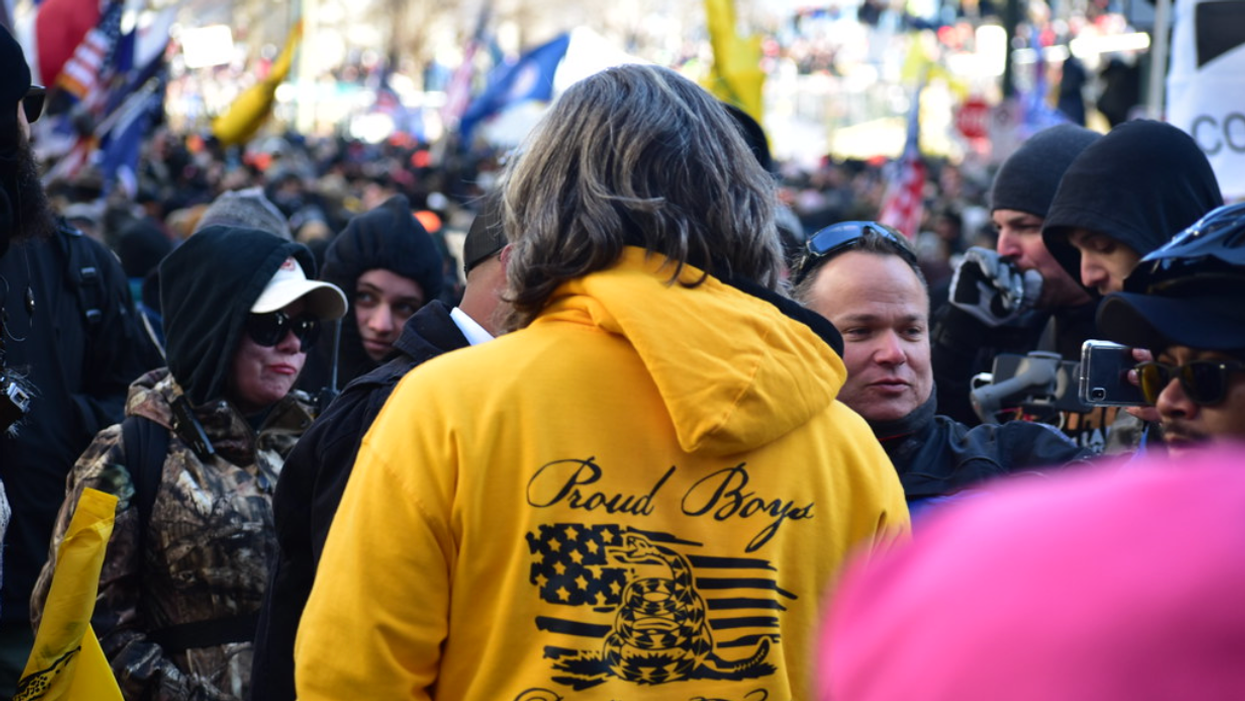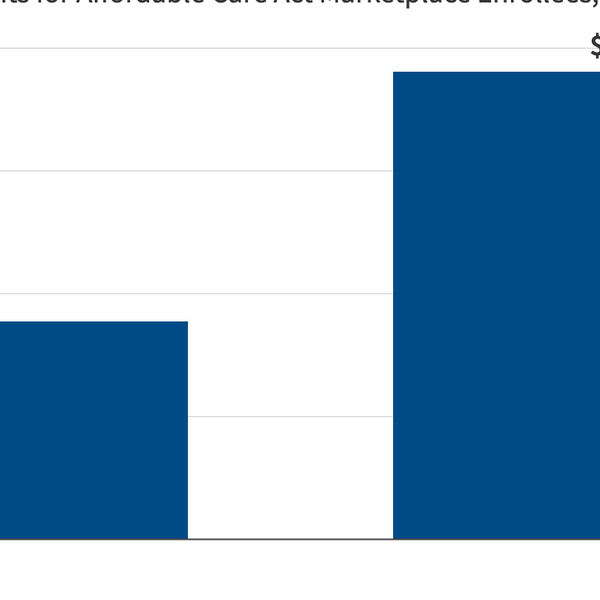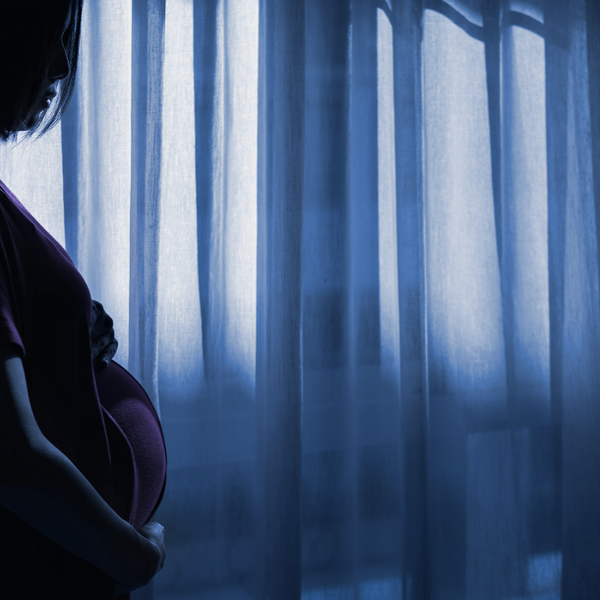How Police Inertia And Cronyism Promoted Proud Boys Violence

Proud Boys at Virginia Second Amendment rally in 2020
Reprinted with permission from Daily Kos
A veteran officer on the Fresno, California, city police force was placed on leave over the weekend when it emerged that he had joined a group of Proud Boys in counterprotesting local citizens who oppose turning over a local theater to an anti-LGBTQ church. But it also turned out that this was nothing new: The officer, a veteran of over a decade named Rick Fitzgerald, had been marching with the hate group for over three years.
It went unnoticed largely because modern police culture, over the past four years, developed an extremely tolerant and often benign approach to dealing with far-right street brawlers like the Proud Boys. As The New York Times explored in depth this weekend, it took their prominent role in the Jan. 6 insurrection at the U.S. Capitol for law enforcement to recognize that these proto-fascist organizations are a public menace, and the involvement of law enforcement officers both in the groups themselves, and in enabling their violence—often by turning a blind eye to it, while charging their victims with crimes—is a serious problem that police agencies around the country must confront.
From the very outset—beginning with their first public event, in April 2017 in Berkeley, California—the Proud Boys' entire brand has revolved around generating extraordinary street violence. Yet even as its track record for extremism mounted with each "free speech" and "pro-Trump" event held in a targeted liberal urban center—particularly in Portland, Oregon, and other West Coast cities—the kid-gloves treatment they received from police forces dealing with them became a documented trend.
In spite of that, the FBI and most police forces, as the Times reports, "had often seen the Proud Boys as they chose to portray themselves, according to more than a half-dozen current and former federal officials: as mere street brawlers who lacked the organization or ambition of typical bureau targets like neo-Nazis, international terrorists and Mexican drug cartels."
"There was a sense that, yes, their ideology is of concern, and, yes, they are known to have committed acts of violence that would be by definition terrorism, but we don't worry about them," Elizabeth Neumann, a former assistant secretary for threat prevention in the Department of Homeland Security, told the Times. "The Proud Boys are just the guys-that-drink-too much-after-the-football-game-and-tend-to-get-into-bar-fights type of people — people that never looked organized enough to cause serious national security threats."
Fitzgerald is hardly the first police officer to face scrutiny for involvement with the Proud Boys:
- A female deputy officer from Clark County, Washington, was fired after posing for a photograph wearing a Proud Boys sweatshirt, as well as appearing in a photo shared on a Proud Boys Twitter account accompanied by her contact information in order to purchase "Proud Boys' Girls" merchandise.
- A former Connecticut cop admitted in 2019 that he had belonged to a local chapter for eight months, but was told his membership didn't violate department policy; he retired anyway.
- In Chicago, a three-year veteran named Robert Bakker was caught organizing Proud Boys meetups in online chat rooms by local antifascists; Bakker was particularly active in a Telegram channel titled "Fuck Antifa," where he bragged about working in law enforcement. Bakker denied that he was ever a member and remains on the Chicago Police Department force.
Fitzgerald's involvement was exposed when a Twitter user, @Borwin10, published photos of the officer—wearing a mask, but exposing his tattoos and wearing a "Sheepdog" name tag—at both the weekend's protests over Fresno's historic Tower Theater and at a Sacramento Proud Boys march in November. In another photo, the same man can be seen stealing a rainbow-colored flag from a counterprotester. It also emerged that Fitzgerald was one of eight Fresno officers involved in the 2010 killing of a 23-year-old Fresno State student.
Fresno Police Chief Paco Balderrama promptly announced Fitzgerald's suspension. Fresno Mayor Jerry Dyer confirmed that the man in the photos is a Fresno police officer.
"As I said in my release yesterday, we take matters such as this very very seriously," Dyer told reporters. "I can tell you as the mayor of this city we will not tolerate any city employee that belongs to or affiliates with — associates with an organization that promotes supremacy, promotes criminal activity or promotes racism."
If local authorities are indeed now taking involvement with the Proud Boys by their police officers seriously, that would mark a significant sea change. There is a long history of city officials dismissing those concerns.
Investigative journalist Will Carless—who last year cowrote for Reveal News a piece exposing how police officers around the United States participate in extremist Facebook pages, and how their departments permit it—observed on Twitter that in the course of reporting that piece, his team had contacted several internal affairs departments about these officers' activities, and "as far as we know, they did nothing."
"After we published our stories, I got calls from several internal affairs departments asking me who the Proud Boys were," Carless added. "Investigating officers told me again and again they weren't concerned about affiliation with the group."
As the Times' law enforcement sources noted, a "blind spot in the culture of law enforcement," even more than the Trump administration's antipathy to any focus on far-right groups, produced this failure. "If the Proud Boys was not a white male chauvinist club but a Black male chauvinist club, I think that, sadly, we would have seen a different policing posture," said Neumann.
"They committed violence in public, used videos of that violence to promote themselves for other rallies and then traveled across the country to engage in violence again," Mike German of the Brennan Center for Justice at New York University remarked. "How that didn't attract FBI attention is hard for me to understand."
The cases of the Proud Boys indicted in the Capitol insurrection—particularly Ethan Nordean, one of the group's primary leaders on Jan. 6—provide a clear illustration of how the police's biased handling of the organization helped feed these men's beliefs that their violent tactics had the tacit support of law enforcement and other authorities, as the Times piece explores in detail. Nordean and his cohorts, it notes, had been let off the hook by local police in Portland and Seattle on numerous occasions.
The most notorious of these was a late-June 2018 riot in Portland during which Nordean flattened an antifascist with whom he was brawling, the video of which then went viral, making him a kind of celebrity in far-right circles. Police in fact arrested Nordean that day—but then released him 30 minutes later. He was never charged; instead, prosecutors charged his victim, who suffered a "severe concussion," with assault. The next week, he was named "Proud Boy of the Week" on the group's Facebook pages and made an appearance on Alex Jones' InfoWars broadcast, which he used to recruit new members.
This was part of a consistent and ongoing pattern, particularly with the Portland Police Bureau: Proud Boys would bus in men armed for street combatfrom out of town, sometimes even driving their pickup trucks through the downtown and shooting pedestrians with paintball guns, while police stood by and did nothing. When a man hurled a pipe bombat Black Lives Matter demonstrators last summer and he was identified on social media, police chose not to investigate because no witnesses came forward to place the man there.
This was in fact a concrete far-right strategy that evolved between April 2017 and January 2021. A Washington Post feature about the man who organized a "Cruise for Trump" rally in Portland described in clear detail how this all works: A nonresident of a liberal urban center organizes a protest ostensibly around the right-wing cause du jour, which then attracts a horde of other nonresidents, whose supposed purpose is to come tell people who live in those cities how terrible their politics are—but whose underlying purpose, betrayed by the weapons and defensive gear they bring along with an attitude of eagerness to punch "leftists," is to engage in violence.
The Proud Boys and their cohorts were adept at adopting mainstream right-wing talking points as the ostensible purpose of their rallies. Their earliest events were about "free speech" and defending Donald Trump from leftist critics. Soon enough, the purpose for these events began to vary widely, signaling clearly what had already become obvious to observers: Namely, the designated cause was just a beard for right-wing outsiders to wear while planning street violence in the urban centers they loathed.
- A May 2018 rally in downtown Seattle was officially a protest endorsing "open carry" firearms laws, after the city had attempted to pass an ordinance disallowing firearms in city parks and other public spaces.
- A June 2018 rally in Portland—previewed by a vow from a Proud Boys leader to "cleanse the streets" of the city—was organized to protest the city's pro-immigrant "sanctuary city" status. This protest eventually broke down into extraordinary violence by members of the Proud Boys.
- A November 2018 event in downtown Portland was dubbed "HimToo"—a reference to the anti-sexual-assault #MeToo hashtag, but in this case turned on its head into a rally in favor of men's rights, held shortly after the Senate confirmation hearings for Supreme Court Justice Brett Kavanaugh, in which allegations of sexual assault played a major role.
- And sometimes, the Patriot Prayer/Proud Boys contingent would simply organize "flash marches" in downtown Portland with no official purpose, other than to create opportunities for violence—as one such rally in October 2018 did.
- Finally, the marches became causes unto themselves, such as when hundreds of out-of-town Proud Boys gathered in Portland in August 2019 and paraded through the town, sometimes with a full police escort—while more than a dozen counterprotesters were arrested by police.
The Proud Boys themselves never made much of an attempt to disguise their violent intentions on social media, however. Prior to that last 2019 rally, Proud Boys leader Joe Biggs (also currently under indictment for his role in the Jan. 6 attack) openly encouraged would-be participants to embrace the violence.
Biggs urged his Twitter followers: "Get a gun. Get ammo. Get your gun license. Get training. Practice as much as you can and be ready because the left isn't playing anymore and neither should we." He followed that with a "Death to Antifa" meme featuring an image of a corpse in a plastic body bag.
Supporters chimed in with memes depicting ISIS-style beheadings of antifascists with large knives, along with comments expressing their unquenched desire to "exterminate" far-left activists. "I fully expect [an] armed conflict to break out on Aug. 17," one commenter said. "People may die this is the real deal."
Police provided some of the Proud Boys marchers that day with an escort. Towards the end, they turned their attention to antifascist demonstrators in downtown Portland and arrested 13 of them. A September 2020 Proud Boys rally in Portland had essentially the same outcome, though with many fewer demonstrators involved.
Law enforcement's cozy relationship with the Proud Boys now appears over—at least on the official level. Rooting it out of the broader police culture—clearly an important component of the task now facing law enforcement in rooting far-right extremists out of their own ranks in order to adequately combat the violent ideologies behind the Capitol siege—will no doubt prove a much harder hill to climb.
- Shooting In Olympia As Fascist Violence Spreads Across The ... ›
- Far-Right Gunmen Accused Of Shooting Near Seattle 'CHOP' Zone ... ›
- Proud Boys Crack-Up Reveals Their White Nationalist Essence ... ›
- Notorious White Nationalists Identified In Capitol Rioting - National ... ›
- Far Right, Proud Boys Cheer Trump's Call To 'Stand By' - National ... ›
- Proud Boys Attacked Black Churches In DC — Just Like KKK ... ›
- Proud Boys Leader, A Convicted Felon, Will Face Illegal Weapons ... ›
- FBI Busts Philly Proud Boys Leader After Finding Photos Of Him At Capitol On Jan. 6 ›
- Proud Boys Indicted In Capitol Riot Have Police Ties - National Memo ›
- Proud Boys leader Enrique Tarrio 'once a prolific police informer ... ›
- After Mike Pence's Philadelphia police union visit, the Proud Boys ... ›
- Proud Boys, Black Lives Matter, police: Do cops favor far-right group? ›
- Fresno police officer accused of being affiliated with 'Proud Boys ... ›
- Fresno Police Department looking into possible Proud Boys ... ›
- Proud Boys: who are the far-right group that backs Donald Trump ... ›
- Exclusive: Proud Boys leader was 'prolific' informer for law ... ›
- 'A Total Failure': The Proud Boys Now Mock Trump - The New York ... ›
- Police Shrugged Off the Proud Boys, Until They Attacked the Capitol ... ›
- D.C. Police Arrest Leader Of The Proud Boys Ahead Of Far-Right ... ›








